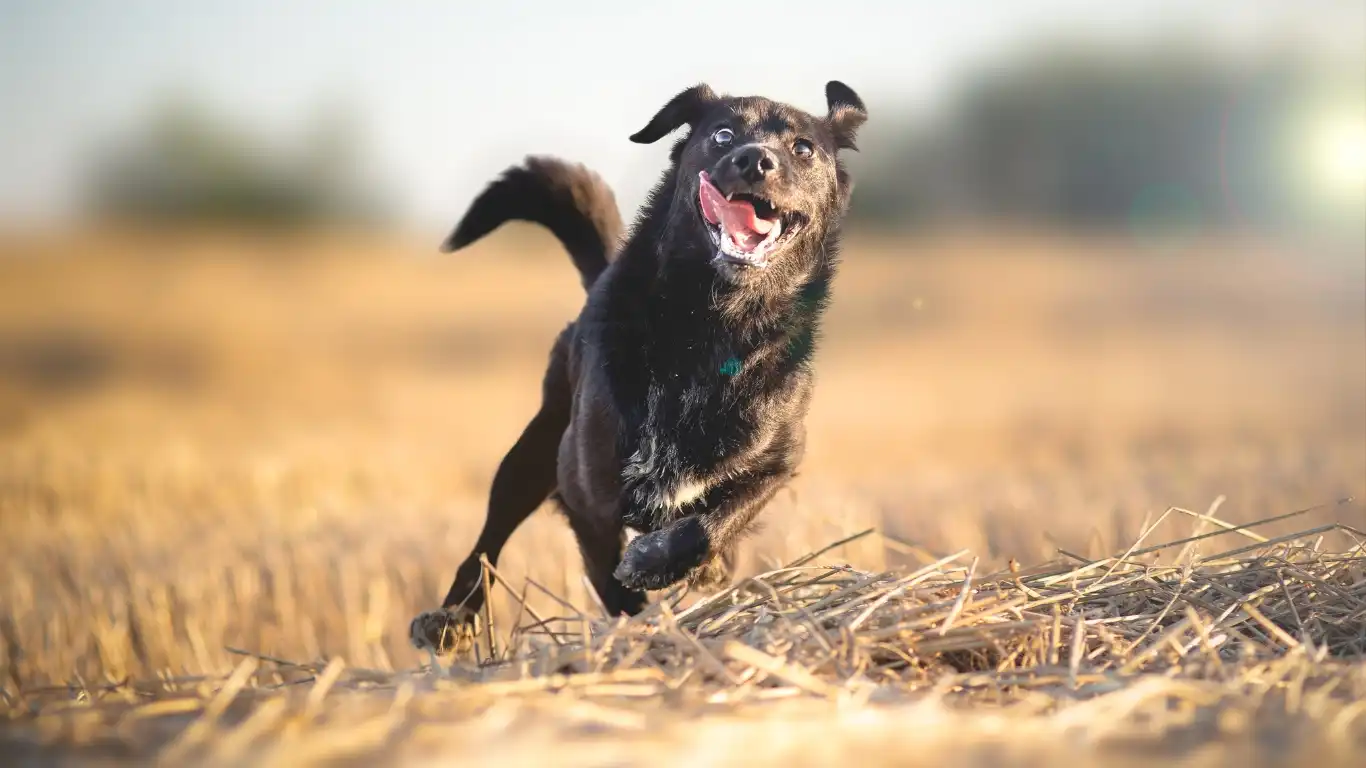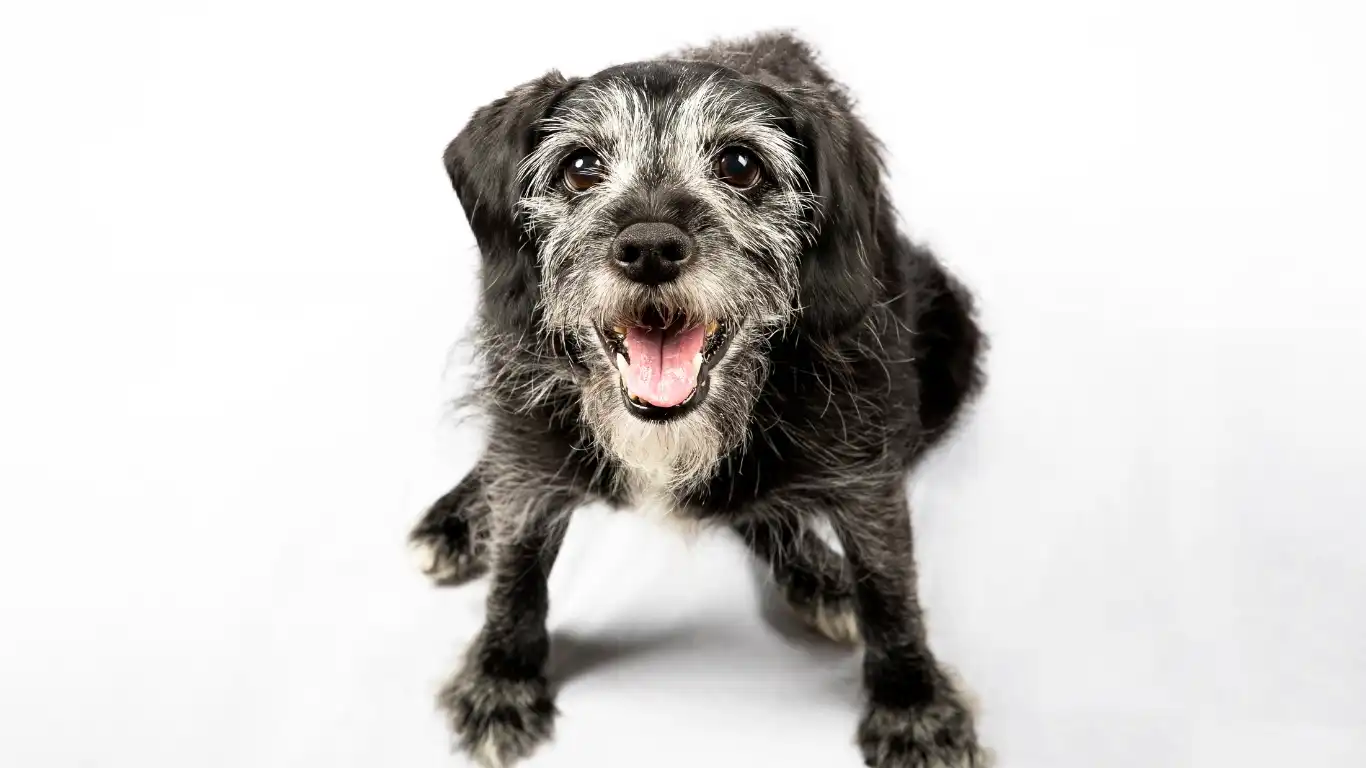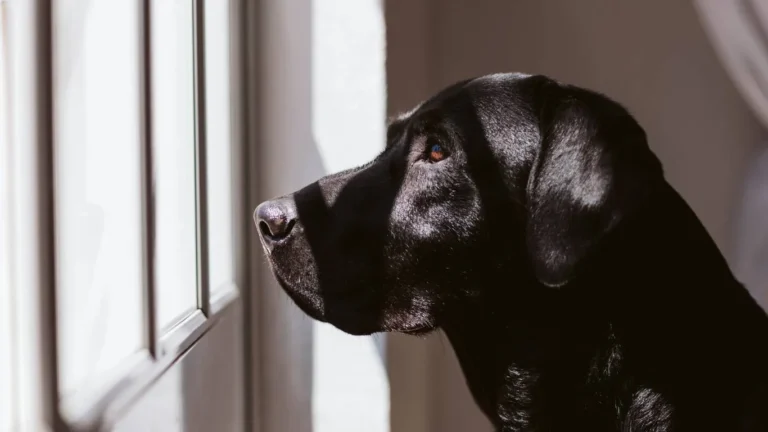How to Prepare for Your Dog’s First Vet Visit – Tips & Essentials
As a veterinary technician, I’ve seen firsthand how overwhelming a dog’s first visit to the vet can be for both the pet and the owner. It’s a new experience that can stir up feelings of anxiety, worry, and even confusion. Whether you’ve adopted a puppy or rescued an adult dog, preparing for that first trip to the vet is crucial for setting the tone for future visits. It’s not just about getting a check-up; it’s about creating a positive experience that helps your dog feel safe and comfortable at the vet’s office. So, in this guide, we’ll talk about how to prepare for your dog’s first vet visit and give you some tips to make the experience go as smoothly as possible.
What to Expect During Your Dog’s First Vet Visit

Before you even step foot in the clinic, it’s important to know what to expect. The first vet visit is typically a general health check-up, and it may include a series of routine exams to ensure your dog is healthy. If you’re bringing in a puppy, the vet will check for signs of growth and development, vaccinations, and may discuss neutering or spaying. Adult dogs, on the other hand, may have a more detailed physical exam depending on their age, breed, and health history.
Health History and Important Paperwork
One of the first things the vet will ask is about your dog’s health history. This includes any previous medical conditions, surgeries, or vaccinations. If you’ve adopted your dog, the shelter or rescue group may have provided a health record. Make sure you bring this along. Even if you’ve had your dog for a while, you’ll want to make sure you have information like:
- Previous vaccinations
- Parasite treatments
- Any medical conditions or treatments
- Diet and nutrition info (this is especially important for puppies!)
Don’t worry if you don’t have all the answers—your vet is used to working with new pet parents and can help fill in the gaps. The more info you provide, the easier it is for the vet to create a health plan tailored to your dog’s needs.
Preparing Your Dog for the Vet Appointment

Now that you know what to expect, it’s time to talk about how you can prepare your dog for the visit. Your dog is probably going to be a little nervous or scared, especially if it’s their first trip to the vet. It’s important to keep in mind that dogs are very sensitive to their owners’ emotions. If you’re calm and relaxed, your dog will likely pick up on that energy and feel more at ease. On the flip side, if you’re anxious or stressed, they may pick up on those cues and get nervous, too.
Desensitize Your Dog to the Vet’s Office
One of the best ways to prepare your dog is by getting them used to the vet’s office before the actual appointment. Take your dog to the clinic a few days before the visit. Even if they’re not seeing the vet yet, walking around the building and getting them familiar with the smells, sounds, and sights can make a huge difference. Some vets even offer “happy visits,” where you can stop by just to get a treat or a quick pet from the staff, so your dog associates the clinic with positive experiences.
Practice Handling and Gentle Touches
During the exam, the vet will be handling your dog a lot, so it’s important that they’re comfortable being touched in different areas. If your dog isn’t used to having their paws, ears, or mouth touched, start practicing these things at home. Gently hold their paws for a few seconds, check their ears, and lift their lip to get them used to being touched all over. Do this regularly in a calm, relaxed setting. If you can get your dog to associate these actions with positive rewards, like treats or playtime, they’ll be much more comfortable when the vet does the same.
What to Bring with You to the Vet

Preparing for the visit doesn’t just mean getting your dog ready—it’s about getting yourself ready, too! Here’s a quick checklist of things you’ll want to bring to your dog’s first vet appointment:
- Health records—as mentioned earlier, bring any paperwork related to your dog’s health. This could include vaccination records or any treatments they’ve had in the past.
- Leash and collar—a leash will keep your dog safe and under control during the visit. Even if your dog is well-behaved, it’s best to keep them on a leash while in the waiting room and exam room.
- Food and medications—if your dog is on any medication or follows a special diet, bring that information along with the actual medication (if applicable). The vet may want to discuss any changes to their diet or medication plan.
- Questions or concerns—write down any questions you have ahead of time. It’s easy to forget things when you’re at the vet, so make a note of anything you want to ask about, like training, behavior issues, or dietary concerns.
And of course, don’t forget to bring your dog’s favorite toy or blanket. Having something familiar can help ease any anxiety your dog might feel in the unfamiliar setting.
What to Expect After the First Vet Visit
Once the appointment is over, you may have some follow-up instructions from the vet. They might recommend additional vaccinations, schedule a spay/neuter surgery, or give you tips on feeding and nutrition. Don’t be afraid to ask for clarification if something is unclear—you’re your dog’s best advocate, so it’s important that you understand everything fully.
How to Manage Your Dog’s Anxiety Before and During the Visit

We’ve all been there—your dog’s first vet visit is filled with new experiences, and it can be overwhelming for them (and for you!). The unfamiliar smells, sounds, and sights in the vet’s office can trigger anxiety. As a veterinary tech, I’ve seen how stress can affect dogs, from nervous pacing to even hiding under furniture. But don’t worry, there are a few strategies you can use to help your dog stay calm and collected throughout the process. Let’s talk about how to manage their anxiety both before and during the visit.
Use Calming Techniques Before the Appointment
It’s always a good idea to prepare your dog for the vet visit in advance, especially if they’re particularly nervous. Before the big day, you can try desensitizing your dog to the sights, sounds, and smells of the vet’s office by making short trips there as practice. However, if your dog is already showing signs of anxiety, there are a few calming techniques you can try:
- Pheromone diffusers: These are available as sprays or collars that release synthetic calming pheromones. It can help reduce anxiety in some dogs, especially during travel or when in stressful environments like the vet.
- Exercise: A good walk or play session before the appointment can help burn off any excess energy. A tired dog is less likely to feel anxious.
- Interactive toys: Bringing a favorite toy or something that engages your dog’s attention can help distract them during long waits or stressful moments.
During the Visit: Stay Calm and Provide Reassurance
When you finally arrive at the vet, your calm demeanor will go a long way in reassuring your dog. If you’re nervous, your dog will pick up on that energy, and it might add to their stress. Try to stay relaxed and calm. And remember, this is a new environment for both of you, so it’s okay to feel a bit anxious, but the more you can model calmness, the more your dog will follow suit.
During the exam, if your dog seems particularly stressed, try talking to them in a soothing voice, or gently pet them if that’s something they enjoy. I’ve often seen dogs feel more at ease when their owner is reassuring them with a gentle hand or soft words. You can also ask the vet if there’s a quieter room or a space where your dog can feel less overwhelmed by other pets in the waiting area.
Questions to Ask Your Vet During the First Visit

So, you’ve made it through the appointment! Now it’s time to make sure you’re getting all the information you need to take the best care of your dog moving forward. Don’t hesitate to ask your vet questions during the visit—it’s your chance to gather important information that can help set your dog up for a healthy future. Here are some questions I recommend asking during your dog’s first vet visit:
- What is my dog’s ideal weight? It’s important to know what your dog’s healthy weight range should be so you can monitor their diet and prevent obesity.
- What kind of food do you recommend? Your vet can suggest the best food for your dog’s age, breed, and health. They might also recommend certain foods if your dog has specific dietary needs.
- What vaccines does my dog need? The vet will likely provide a vaccine schedule for your dog, especially if they’re a puppy or haven’t had their vaccinations yet.
- Are there any parasites I should worry about? Depending on your location, there might be a risk of parasites like ticks, fleas, or heartworms. Your vet can recommend a prevention plan.
- When should I schedule their next visit? Whether it’s for a booster shot or a routine check-up, it’s helpful to know when to schedule your next visit.
After the Vet Visit: The First 24 Hours
After the vet visit, your dog may be a little groggy or a bit out of sorts, especially if they had any vaccinations or treatments. It’s important to keep an eye on them for the first 24 hours following the visit. If your dog was sedated for any procedures, you’ll need to monitor them as they wake up and ensure they’re not showing any unusual symptoms, like excessive lethargy, vomiting, or unusual behavior.
Watch for Side Effects of Vaccinations
If your dog received vaccinations during their visit, some mild side effects are normal. These may include:
- Fatigue: Your dog might be a little tired after getting shots, which is completely normal.
- Appetite changes: It’s not uncommon for dogs to lose their appetite for a day or two after vaccines.
- Slight swelling or redness: If the injection site looks a bit swollen or red, it should resolve on its own within a day or so.
However, if you notice any signs of a severe allergic reaction, such as excessive swelling, difficulty breathing, or vomiting, contact your vet immediately. Most side effects are mild and short-lived, but it’s always better to be cautious.
What to Do If Your Dog Doesn’t Like the Vet
So, what happens if your dog absolutely hates going to the vet? Don’t worry, you’re not alone. Many dogs are scared or anxious about the vet, and some develop negative associations with the place. As a veterinary technician, I’ve worked with many dogs who have had bad experiences at the vet, but with some patience and consistency, it’s possible to turn things around.
Positive Reinforcement
Using positive reinforcement is key to changing your dog’s perception of the vet. After each visit, reward your dog with their favorite treat or a fun activity they enjoy. This helps your dog associate the vet with something positive instead of something stressful. You can also practice calm behavior at home, like having your dog go into their carrier or getting used to being handled, and reward them for good behavior during these practice sessions.
Behavioral Training
If your dog’s fear of the vet is more severe, it might be worth investing in some behavioral training. A professional dog trainer can help desensitize your dog to the vet’s office and teach them to feel more comfortable in such situations. Over time, with the right approach, your dog’s anxiety should lessen, and they’ll start viewing the vet as just another part of their routine.
Understanding the Costs of Your Dog’s First Vet Visit

One thing that often catches new pet owners off guard is the cost of a vet visit. While it’s totally understandable to focus on your dog’s well-being, it’s also important to be prepared for the financial side of things. Depending on your location, the type of visit, and the services your dog needs, your first vet visit could range from fairly inexpensive to more costly. I’ve seen many clients come in with a sticker shock, especially when vaccinations or tests are involved.
What Factors Influence the Cost?
The cost of a vet visit can depend on a few key factors, such as:
- Location: Vet prices can vary greatly depending on where you live. In urban areas, for example, you might pay more due to higher overhead costs at the clinic.
- Age and Health Status: If you have a young puppy, there may be a series of vaccinations and check-ups that add to the cost. For older dogs or those with pre-existing conditions, more tests or treatments might be necessary.
- Type of Visit: Is it a routine check-up, or is your dog being seen for a specific issue? Emergency visits or specialized treatments like surgeries or consultations with specialists will naturally cost more.
As a veterinary technician, I always recommend asking for an estimate before the visit. Many clinics offer transparency in pricing, and it can help you prepare financially. It also gives you a chance to ask questions about what’s included in the cost and what might be additional.
How Often Should You Take Your Dog to the Vet?

After your dog’s first vet visit, you’ll likely be wondering how often you need to schedule check-ups. While it can depend on your dog’s age, breed, and overall health, there are general guidelines that can help. As someone who’s worked in the field for years, I always recommend following a consistent vet schedule to ensure your dog stays healthy and happy.
For Puppies
If you have a puppy, the first year is crucial for establishing a solid health foundation. Typically, puppies will need multiple visits to the vet during their first year to keep up with vaccinations, parasite treatments, and general growth checks. The most common schedule looks something like this:
- 8 weeks old: First vaccinations (distemper, parvovirus, etc.)
- 12 weeks old: Second round of vaccinations
- 16 weeks old: Final set of puppy vaccinations
- 6 months old: Spaying or neutering (if not already done)
After the first year, you can switch to a more routine schedule of annual check-ups, but always check with your vet to see if any specific vaccines or treatments are needed based on your dog’s lifestyle and environment.
For Adult Dogs
For adult dogs (1 to 7 years old), annual vet visits are typically sufficient. These check-ups usually involve a physical exam, vaccinations, and discussions about nutrition, weight management, and preventative care. If your dog is particularly active or at risk for certain conditions, your vet may suggest more frequent visits.
For Senior Dogs
Once your dog reaches 7 years old, they’re considered a senior, and their health needs may change. It’s a good idea to schedule bi-annual visits to the vet to keep an eye on things like joint health, dental care, and any potential age-related conditions like arthritis or heart disease. Regular screenings can catch health issues early and give your dog a better quality of life in their later years.
Alternative Care Options: When to Seek a Specialist
Sometimes, despite your best efforts, your dog might need care beyond what your general vet can provide. It’s important to know when it might be time to seek a specialist. As a veterinary technician, I’ve had many clients come in for specific issues that required the expertise of specialists, such as:
- Dermatology: If your dog has persistent skin conditions, allergies, or itching, a veterinary dermatologist can help.
- Cardiology: For dogs with heart disease or heart murmur concerns, a veterinary cardiologist may be necessary for specialized care.
- Ophthalmology: If your dog develops eye problems, such as cataracts or glaucoma, an ophthalmologist can help with diagnosis and treatment.
- Orthopedics: If your dog has chronic joint pain or has been injured, an orthopedic specialist can provide targeted care for musculoskeletal issues.
Specialists typically come into play when your dog’s condition is more complex or requires a higher level of care than your general vet can provide. If your vet recommends seeing a specialist, don’t hesitate to ask questions about the process and what you can expect. Specialists can make a huge difference in your dog’s long-term health.
References
Disclaimer
The information provided in this article is for general informational purposes only. It is not intended as veterinary advice. Always consult with a qualified veterinarian regarding your dog’s health and care. Each dog is unique, and what works for one may not work for another. If you have concerns about your pet’s health or well-being, please contact a licensed veterinary professional.






